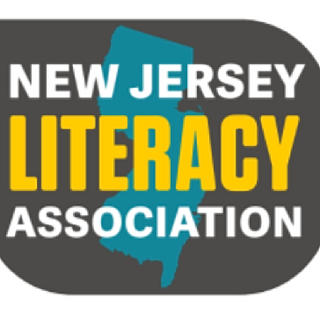Representation of All Children in Early Chapter Books
- New Jersey Literacy Association
- Jun 18, 2021
- 4 min read
by Susan Dougherty, NJLA Board Member

Early chapter books hold a special place in the literacy lives of young readers. Every 1st and 2nd grade teacher knows the great pride a child feels when they are able to read “a chapter book.” Many readers have fond memories of reading Frog & Toad, Henry & Mudge, or Little Bear books in those early grades. And, yet, the body of well-known early chapter books suffers from a problem that has long plagued children’s literature. The characters in these well-known books are largely white children or anthropomorphic animals. As shown in this infographic from the Cooperative Children’s Book Center at the University of Wisconsin-Madison, even new books published in 2018 overwhelmingly feature white or animal main characters.
As Rudine Sims Bishop (1990) told us decades ago, books can serve as windows, mirrors, and sliding doors if they represent us and show us the lives of others. For a very long time, early chapter books featured exclusively the lives of white children and, thus, for the growing numbers of children from non-white groups, rarely served as mirrors, and for white children, rarely served as windows. In addition, as books began to feature non-white characters, they were often written by white authors, sometimes resulting in distorted depictions of the lives of children of diverse backgrounds, as represented in the cracked mirrors shown above.
We may have reached an important juncture, however. A number of new early readers series have been introduced that have been written by authors of diverse backgrounds and feature children from these same backgrounds. I share some of my favorites below.
Ty’s Travels
In 2020, HarperCollins Publishers released the first I Can Read! series that features a Black family. Author Kelly Starling Lyons, a founding member of the Brown Bookshelf, and illustrator Nina Mata introduce us to Ty in the Ty’s Travels series. In Zip! Zoom!, winner of a Geisel honor medal, Ty learns to ride a scooter after a shaky start. In All Aboard!, Ty and his family turn a cardboard box into a train and spend time playing together after a busy day of work. This series, rated as a guided reading level I is a wonderful addition to the 1st grade collection of early readers.

Yasmin!
In 2018, author Saadia Faruqi and illustrator Hatem Aly collaborated on a delightful new early chapter book character – Yasmin. Yasmin and her family are featured in a series of stories about the life of a spunky 8-year-old girl engaged in activities from navigating the local farmer’s market, entering a contest at school, and helping her neighbors. The series, published by Capstone Books, reflects aspects of Saadia Faruqi’s Pakistani American culture and is a perfect addition to the collection of the 2nd grade level early readers.

Ana & Andrew
The Ana & Andrew series was launched in 2018 by ABDO books. Written by African-American history scholar and author Christine Platt and illustrated by Sharon Sordo, the series features siblings Ana and Andrew who live in Washington, D.C. with their parents. Their extended family live in Savannah, GA and in Trinidad and their adventures include a summer visit to Georgia and a trip to celebrate Carnival in Trinidad. Other stories include visits to the Smithsonian Museum of African American History and Culture, a snow day, and a family reunion. 2nd graders will love this series.

Astrid & Apollo and Sadiq
Moving a bit beyond the early reader realm, I recommend two series that third graders will enjoy. The Astrid & Apollo series, featuring Hmong American twins living in the Midwest, and the Sadiq series, featuring a Somali American child, were released in 2020 by Capstone Books. Author V.T. Bidania grew up in Laos until her family settled in Minnesota as Hmong refugees and author Siman Nuurali grew up in Kenya and also currently lives in Minnesota. The characters in each series navigate friendships, family and school life. They are a welcome addition to the 3rd grade collection.


I encourage all teachers to find ways to add these new series to their classroom libraries and book borrowing rotations. Our young readers will be drawn to these main characters, excited by the authentic representation of their own lives and those of their classmates. In addition, as a collective, educators are a powerful market force. A purchase of even one set of these books will help to send the message to publishers that we want books that authentically feature children of diverse backgrounds. Diverse early readers in the hands of young learners…it’s up to us!
References:
Infographic
Huyck, David and Sarah Park Dahlen. (2019 June 19). Diveristy in Children’s Books 2018. Sarahpark.com blog. Created in consultation with Edith Campbell, Molly Bell Griffin, K. T. Horning, Debbie Reese, Ebony Elizabeth Thomas, and Madeline Tyner, with statistics compiled by the Cooperative Children’s Book Center, School of Education, University of Wisconsin-Madison: ccbc.education.wisc edu/books/pcstats.asp. Retrieved May 1, 2021 at https://readingspark.wordpress.com/2019/06/19/picture-this-diversity-in-childrens-books-2018-infographic/ via @wordpressdotcom
Sims Bishop, R. (1990). Windows, mirrors and sliding doors. In Perspectives: Choosing and using books for the classroom, Vol. 6, 3.












Commenti